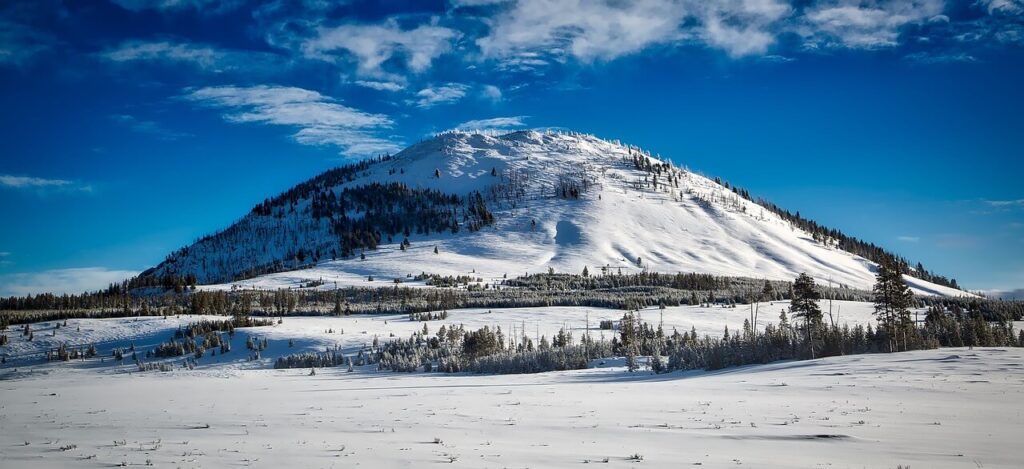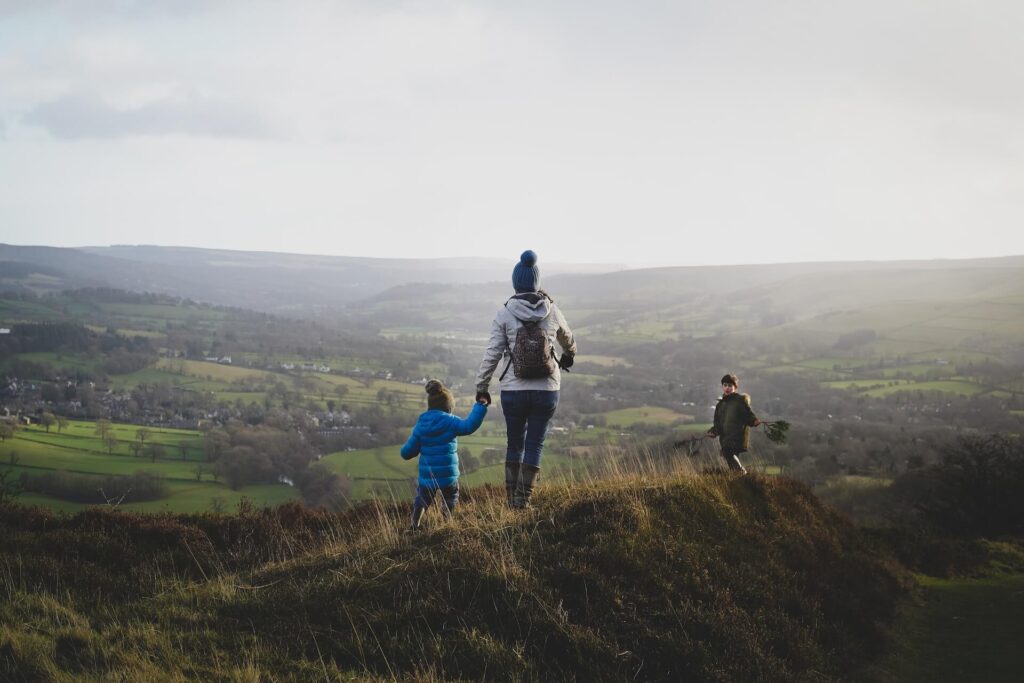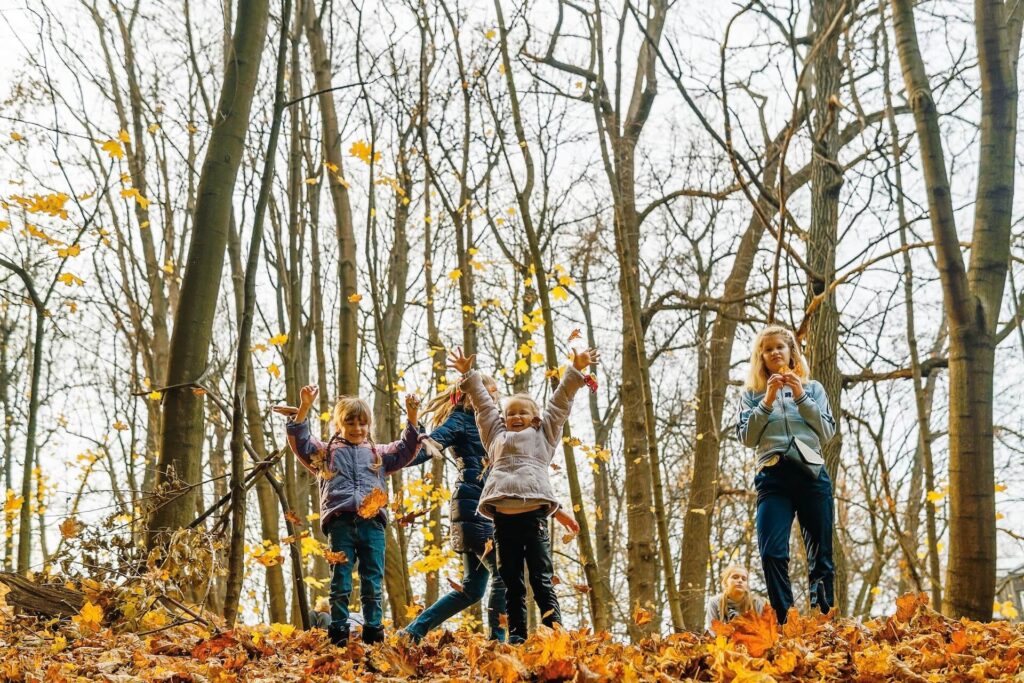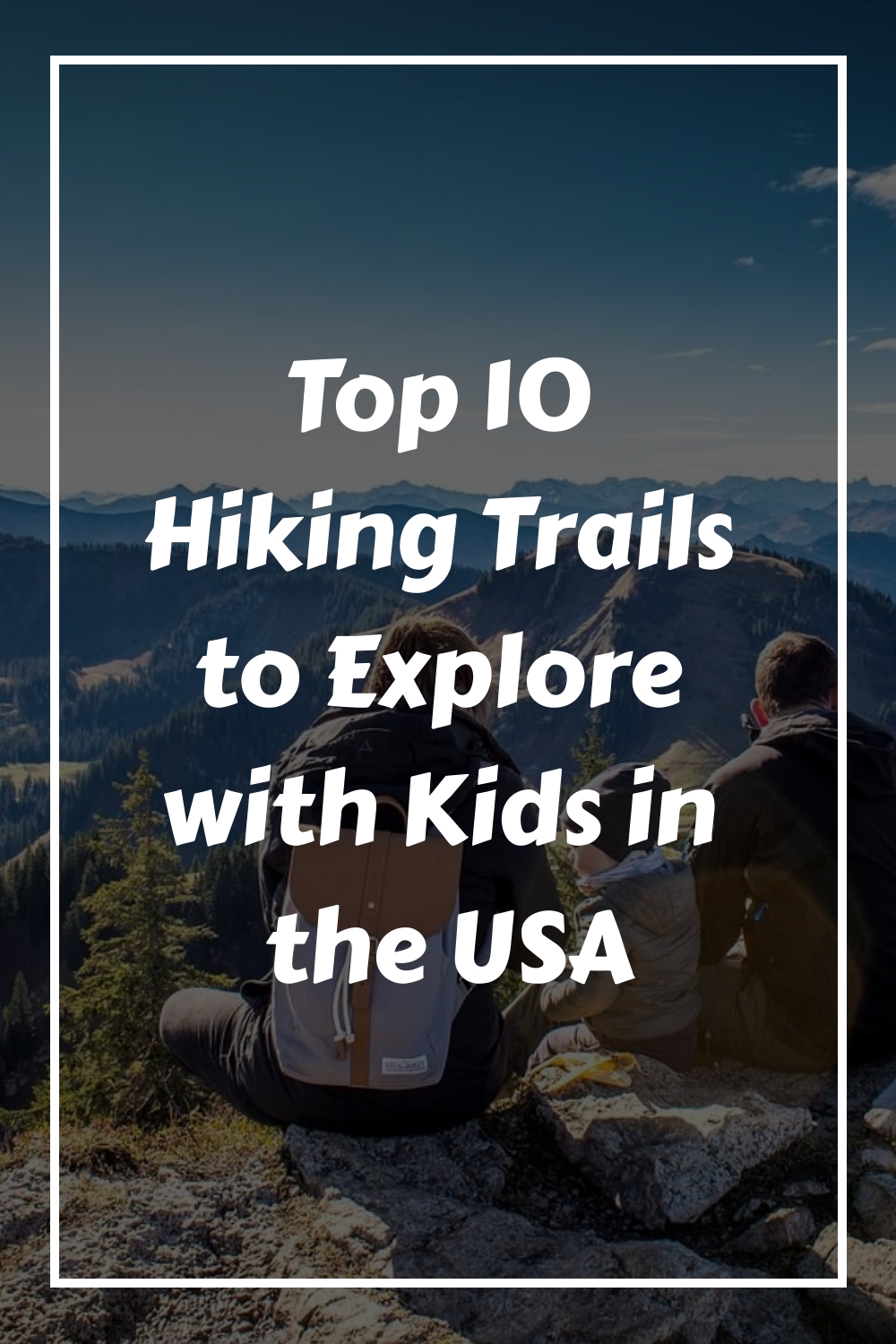
Introduction: The Joy of Hiking Trails with Kids
Hiking trails with kids is a wonderful adventure that offers countless joys and benefits for both children and parents alike. It provides a unique opportunity to connect with nature, unplug from screens and technology, and create lasting memories as a family.
One of the joys of hiking with kids is the chance to explore the great outdoors together. It allows children to experience the beauty and wonder of nature firsthand, from the towering trees and rugged mountains to the babbling brooks and chirping birds. Kids can learn about different plant and animal species, observe wildlife in their natural habitats, and develop a deep appreciation for the environment and the natural world.
Hiking also encourages physical activity and exercise, making it a healthy and active way to spend time with kids. It provides a chance for children to stretch their legs, breathe in the fresh air, and get their hearts pumping as they traverse various terrains. Hiking can contribute to their overall physical fitness, help improve their strength, endurance, and balance, and instill healthy habits early on in life.
Moreover, hiking with kids promotes mental well-being and emotional development. It allows children to disconnect from screens and distractions and reconnect with themselves and their surroundings. It can help reduce stress, anxiety, and mental fatigue, and provide a much-needed escape from the demands of modern-day living. Hiking also encourages a sense of mindfulness and presence, as kids learn to be fully present in the moment and appreciate the beauty and serenity of nature.
In addition to the physical and mental benefits, hiking with kids is an opportunity for quality family time and bonding. It provides a chance to create cherished memories, share adventures, and strengthen the bond between family members. Hiking encourages communication, teamwork, and problem-solving skills, as kids learn to navigate trails, overcome obstacles, and work together as a team. It also provides opportunities for shared laughter, storytelling, and bonding over common experiences, creating lasting connections and strengthening the family bond.
Finally, hiking with kids can foster a sense of accomplishment and pride. As children complete hikes and reach their destination, they experience a sense of achievement and satisfaction. It boosts their self-esteem, builds their confidence, and instills a sense of resilience and determination. Kids learn that they are capable of overcoming challenges and achieving their goals, which can have a positive impact on their overall sense of self-worth and confidence.

Essential Tips for Hiking with Kids
Hiking with kids can be a wonderful adventure, but it requires careful planning and preparation to ensure a safe and enjoyable experience for the entire family. Here are some essential tips to keep in mind when hiking with kids:
- Choose kid-friendly trails: When planning a hike with kids, it’s important to select trails that are suitable for their age, fitness level, and experience. Look for trails with gentle slopes, shorter distances, and interesting features such as waterfalls, wildlife, or scenic viewpoints to keep kids engaged and motivated. Avoid trails that are too challenging or remote for kids, as it may lead to fatigue, frustration, or safety risks.
- Pack essential gear: Proper gear is crucial for a safe and comfortable hiking experience with kids. Make sure to pack essentials such as sunscreen, insect repellent, hats, sunglasses, and appropriate clothing for changing weather conditions. Carry enough water and snacks to keep kids hydrated and energized during the hike. Also, bring a basic first aid kit, including bandages, antiseptics, and any necessary medications for emergencies.
- Start early and take breaks: Kids may tire more easily than adults, so it’s a good idea to start the hike early in the day when they are fresh and energetic. Take frequent breaks along the way to rest, refuel, and enjoy the surroundings. Let kids set the pace and listen to their cues. If they show signs of fatigue or discomfort, take additional breaks or shorten the hike accordingly.
- Keep kids engaged: Hiking can be an exciting learning opportunity for kids, so keep them engaged by involving them in the experience. Encourage them to observe nature, identify plants and animals, and learn about the environment. Play games, tell stories, and engage in interactive activities to make the hike more enjoyable and educational for kids.
- Prioritize safety: Safety should be a top priority when hiking with kids. Make sure to educate kids about hiking safety rules, including staying on the trail, avoiding dangerous areas, and respecting wildlife. Keep kids within sight and earshot at all times and avoid risky behaviors such as climbing on unstable rocks or crossing fast-moving streams. Be prepared for unexpected situations and have a plan in case of emergencies.
- Dress appropriately: Dressing appropriately for the hike is important for kids’ comfort and safety. Choose sturdy and comfortable footwear that fits properly to prevent blisters or injuries. Dress in layers to adapt to changing weather conditions, and bring rain gear if necessary. Don’t forget to apply sunscreen and insect repellent to protect kids from sunburn and bug bites.
- Be mindful of the environment: Teach kids to respect and protect the environment while hiking. Leave no trace by packing out all trash, staying on designated trails, and respecting local flora and fauna. Encourage kids to appreciate the beauty and fragility of nature and instill a sense of responsibility towards the environment for future generations.
- Plan for emergencies: It’s important to be prepared for emergencies when hiking with kids. Carry a map, compass, or GPS device, and know how to use them. Make sure to have a fully charged cellphone, but be aware that there may not always be a reception in remote areas. Let someone know your hiking plans, including your route and estimated return time. In case of an emergency, stay calm and follow your plan.

Packing for Success: What to Bring on a Kid-Friendly Hiking Trip
When it comes to hiking with kids, packing the right gear and supplies can make a big difference in the success of your trip. Here are some essential items to consider bringing on your next kid-friendly hiking adventure:
- Comfortable clothing and footwear: Choose comfortable, weather-appropriate clothing and footwear for your family. Dress in layers to adjust to temperature changes and weather conditions. Avoid cotton clothing, which can retain moisture and cause discomfort. Opt for lightweight, breathable, and quick-drying materials such as synthetic or wool. Wear sturdy, comfortable, and well-fitting hiking boots or shoes with good traction and ankle support.
- Sun protection: Protect your family from harmful UV rays by wearing sunscreen with a high SPF and reapplying it regularly. Wear sunglasses and a hat or a cap to shield your face and eyes from the sun. Consider bringing a lightweight and breathable sun shirt or a long-sleeved shirt for added protection.
- Navigation tools: Bring a map, a compass, or a GPS device to help you navigate the trail. Teach your children basic navigation skills and involve them in the process of following the map or the trail markers. Use a whistle or a signaling device to communicate in case of an emergency.
- First aid kit: Pack a well-stocked first aid kit with basic supplies such as bandages, gauze, antiseptic wipes, pain relievers, tweezers, and insect repellent. Include any necessary medications or supplies for family members with pre-existing medical conditions.
- Food and water: Bring enough food and water for your family to stay hydrated and nourished throughout the hike. Pack lightweight and nutritious snacks such as trail mix, energy bars, fruits, and sandwiches. Avoid heavy or greasy foods that can cause discomfort or indigestion during the hike. Carry enough water for everyone, even if the trail has water sources.
- Backpack: Choose a comfortable and sturdy backpack to carry all your gear and supplies. Adjust the straps to fit your body and distribute the weight evenly. Consider bringing a child carrier backpack if you have younger children who can’t walk the entire trail.
- Emergency supplies: Prepare for unexpected situations by bringing emergency supplies such as a flashlight, a whistle, a space blanket, matches, and a multi-tool knife. Consider carrying a personal locator beacon or a satellite messenger device for remote or challenging trails.
- Optional extras: Depending on the trail and your family’s preferences, consider bringing optional extras such as a camera, binoculars, a field guide, a nature journal, or a portable water filter.
Remember to pack lightly and only bring what you need. Carrying a heavy and bulky backpack can cause discomfort, fatigue, and injuries. Plan and prepare your packing list in advance to ensure a successful and enjoyable hiking experience for your family.
Top 10 Hiking Trails for Kids in the USA
Hiking with kids can be a rewarding and memorable experience. The United States offers an abundance of breathtaking national parks and scenic trails that are perfect for families with children. Here are three top hiking trails for kids in the USA:

1. Yellowstone National Park, Wyoming
Yellowstone National Park, located in Wyoming, is a natural wonderland that offers numerous hiking trails suitable for kids of all ages. One popular kid-friendly trail is the Fairy Falls Trail, which is a 5.4-mile round-trip hike that takes you through a beautiful forest to a stunning waterfall.
The trail is mostly flat, making it accessible for kids, and offers opportunities for wildlife viewing, including the chance to spot bison, elk, and even bears. Along the trail, there are informational signs that provide interesting facts about the park’s geothermal features, making it an educational experience for kids as well.
2. Acadia National Park, Maine
Acadia National Park, located in Maine, is known for its picturesque landscapes and diverse hiking trails. The Jordan Pond Path is a popular trail for families with kids, offering a 3.2-mile loop around the serene Jordan Pond. The trail is relatively flat and well-maintained, making it suitable for kids of all ages.
Along the way, kids can enjoy the stunning views of the pond and surrounding mountains, and even stop for a picnic or a snack at the Jordan Pond House, a historic restaurant and tea house located along the trail. For older kids and more experienced hikers, the Precipice Trail offers a thrilling adventure with challenging rock scrambles and breathtaking views, but it’s recommended for older kids due to its difficulty level.

3. Zion National Park, Utah
Zion National Park, located in Utah, is a paradise for outdoor enthusiasts, including families with kids. The Riverside Walk is a popular trail for families, offering a paved and mostly flat 2.2-mile round-trip hike along the Virgin River. Kids can enjoy walking alongside the river, crossing wooden bridges, and admiring the towering sandstone cliffs that make Zion National Park famous.
The trail ends at the entrance of the Narrows, a stunning slot canyon that older kids and adults can explore further with proper equipment and precautions. Another kid-friendly trail in Zion National Park is the Emerald Pools Trail, which offers a series of short hikes that lead to beautiful pools and waterfalls, providing a refreshing and enjoyable experience for kids.
4. Great Smoky Mountains National Park, Tennessee/North Carolina
Great Smoky Mountains National Park, located on the border of Tennessee and North Carolina, is a treasure trove of natural beauty and offers several hiking trails that are perfect for kids. The Laurel Falls Trail is a popular choice for families, featuring a paved 1.3-mile round-trip hike to a picturesque waterfall.
The trail is relatively easy and suitable for kids of all ages, with opportunities to spot wildlife and learn about the park’s rich biodiversity. Another kid-friendly trail in Great Smoky Mountains National Park is the Elkmont Nature Trail, which is a short 0.8-mile loop that meanders through a peaceful forest and offers interpretive signs along the way, providing insights into the park’s history and ecosystem.

5. Rocky Mountain National Park, Colorado
Rocky Mountain National Park, located in Colorado, is a hiker’s paradise with stunning alpine landscapes and abundant wildlife. For families with kids, the Bear Lake Nature Trail is a great option, offering a 0.6-mile loop around a pristine alpine lake. The trail is mostly flat and paved, making it accessible for young kids and strollers.
Along the trail, kids can enjoy views of the surrounding mountains, spot wildlife such as elk and chipmunks, and learn about the park’s unique ecosystem through interpretive signs. Another family-friendly trail in Rocky Mountain National Park is the Alberta Falls Trail, which is a 1.7-mile round-trip hike to a beautiful waterfall, with gentle slopes and well-maintained trails that are suitable for kids of all ages.
6. Olympic National Park, Washington
Olympic National Park, located in Washington, offers a diverse range of landscapes, from rugged coastlines to dense rainforests, making it a perfect destination for family hiking adventures. The Hall of Mosses Trail is a popular kid-friendly trail in the Hoh Rainforest, offering a 0.8-mile loop through an enchanting forest draped in moss.
Kids will be fascinated by the unique ecosystem and towering trees covered in greenery, creating a magical atmosphere. Another family-friendly trail in Olympic National Park is the Sol Duc Falls Trail, which is a 1.6-mile round-trip hike to a beautiful waterfall. The trail is relatively flat and well-maintained, with opportunities for kids to learn about the park’s flora and fauna through interpretive signs.

7. Arches National Park, Utah
Arches National Park, located in Utah, is famous for its unique rock formations and stunning natural arches, making it a fascinating destination for a family hiking adventure. The Delicate Arch Trail is a popular hike for families, although it’s considered moderate in difficulty, it offers a rewarding experience for kids.
The trail is 3 miles round-trip and takes hikers through beautiful desert landscapes, leading to the iconic Delicate Arch, a massive sandstone arch that is a sight to behold. Along the trail, kids can learn about the park’s geology and desert ecosystem through interpretive signs, making it an educational and fun experience.
8. Yosemite National Park, California
Yosemite National Park, located in California, is known for its breathtaking granite cliffs, towering waterfalls, and ancient sequoia trees. The park offers several kid-friendly hiking trails that allow families to explore its natural wonders. The Lower Yosemite Falls Loop is an easy 1-mile loop that takes hikers to the base of Yosemite Falls, one of the tallest waterfalls in North America.
The trail is paved and offers stunning views of the falls, providing a great opportunity for kids to appreciate the power and beauty of nature. Another family-friendly trail in Yosemite National Park is the Mariposa Grove Trail, which is a 2.2-mile loop that winds through a grove of giant sequoia trees. Kids will be in awe of the massive trees and can learn about their unique features and significance through interpretive signs along the trail.

9. Shenandoah National Park, Virginia
Shenandoah National Park, located in Virginia, is known for its scenic vistas, dense forests, and picturesque waterfalls. The Dark Hollow Falls Trail is a popular kid-friendly hike in the park, offering a 1.4-mile round-trip hike to a beautiful waterfall. The trail features a series of switchbacks and descends to the falls, providing a moderate level of challenge for kids.
Along the way, kids can enjoy the sights and sounds of the forest, spot wildlife, and learn about the park’s ecology. Another family-friendly trail in Shenandoah National Park is the Limberlost Trail, which is a 1.3-mile loop that meanders through a mature forest and offers interpretive signs about the park’s natural and cultural history, providing a fun and educational experience for kids.
10. Glacier National Park, Montana
Glacier National Park, located in Montana, is known for its stunning alpine scenery, pristine lakes, and rugged landscapes. The Trail of the Cedars is a popular kid-friendly trail in the park, offering a short 0.7-mile loop that winds through a dense cedar forest and along the roaring Avalanche Creek. The trail is flat, paved, and wheelchair accessible, making it suitable for kids of all ages and abilities. Along the trail, kids can learn about the park’s unique ecosystem, including the importance of cedar trees in the local ecology.
Another family-friendly trail in Glacier National Park is the Hidden Lake Overlook Trail, which is a 1.5-mile round-trip hike to a scenic overlook that offers stunning views of Hidden Lake and the surrounding mountains. The trail is well-maintained, although it involves some elevation gain, it’s considered moderate in difficulty, making it suitable for older kids and more experienced hikers.

Tips for Keeping Kids Engaged and Excited on the Trail
Hiking with kids can be a rewarding and enjoyable experience, but it’s important to keep them engaged and excited throughout the trail to ensure a memorable adventure. Here are some tips to keep kids entertained and motivated during a hike:
Make it a Scavenger Hunt: Create a list of items for kids to spot along the trail, such as a specific type of tree, a particular rock formation, or a certain animal track. Encourage them to keep an eye out for these items and mark them off their list as they find them. This adds an element of excitement and adventure to the hike, making it a fun game for kids to actively participate in.
Bring Nature Guidebooks: Consider bringing along a nature guidebook that showcases the local flora and fauna. Kids can use it to identify plants, birds, and animals they come across during the hike. This not only educates them about the natural environment, but also encourages curiosity and observation skills.
Take Frequent Breaks: Kids may get tired or bored during a long hike, so schedule frequent breaks along the trail. These breaks can be for resting, snacking, or playing games. Find a scenic spot, a meadow, or a rock formation where kids can take a break, explore, and enjoy the surroundings. This helps break up the hike and keeps kids motivated to continue.
Bring Snacks and Water: Hunger and thirst can dampen the spirits of kids during a hike, so be sure to bring plenty of snacks and water. Pack lightweight, non-perishable snacks like trail mix, granola bars, and dried fruits that are easy to carry and provide quick energy. Encourage kids to drink water regularly to stay hydrated, especially in hot weather or during strenuous hikes.
Capture the Moment: Encourage kids to document their hiking adventures by bringing along a small journal or a disposable camera. They can draw pictures, write about their experiences, or take photos of interesting things they see along the way. This helps them create lasting memories and engage their creativity.
Play Nature-based Games: Turn the hike into a playful learning experience by playing nature-based games. For example, play “I Spy” with natural objects or play a game of “20 Questions” using animals or plants as the subject. These games not only keep kids entertained but also help them learn about the natural world in a fun and interactive way.
Emphasize Exploration: Encourage kids to explore their surroundings by allowing them to investigate rocks, leaves, insects, and other natural objects they find along the trail. Let them touch, smell, and observe the environment up close, and ask them questions about what they discover. This fosters a sense of curiosity and wonders about the natural world, making the hike an engaging and educational experience.
Make it a Family Adventure: Lastly, involve kids in the planning and decision-making process of the hike. Let them choose the trail, set goals, and participate in map reading and navigation. This creates a sense of ownership and excitement and makes the hike a family adventure where everyone has a role to play.

Conclusion: Discovering the Wonders of Nature with Your Kids
Hiking with kids is an incredible way to introduce them to the wonders of nature and create lasting memories as a family. From exploring national parks to discovering new trails, hiking offers numerous benefits for kids, including physical activity, exposure to natural environments, educational opportunities, and bonding experiences with loved ones. As you conclude your hiking adventure with your kids, here are some key points to reflect on:
Appreciation for Nature: Through hiking, kids can develop a deep appreciation for the beauty and diversity of nature. They can witness breathtaking landscapes, encounter unique flora and fauna, and learn about the importance of conservation and environmental stewardship. Hiking provides an opportunity for kids to connect with nature in a meaningful way and develop a lifelong love for the outdoors.
Physical Fitness and Well-being: Hiking is a great way to promote physical fitness and well-being in kids. It encourages them to be active, strengthens their muscles and bones, and improves cardiovascular health. Hiking also allows kids to enjoy fresh air and sunshine, which can boost their mood, reduce stress, and improve their overall well-being.
Educational Opportunities: Hiking presents endless educational opportunities for kids. They can learn about geology, ecology, wildlife, and natural history as they explore different trails and observe the natural world around them. Kids can also develop important skills such as map reading, navigation, and outdoor safety, which can serve them well in other areas of life.
Family Bonding: Hiking provides an opportunity for families to bond and create precious memories together. It offers quality time away from screens and distractions, allowing for meaningful conversations, shared experiences, and the opportunity to create lasting family traditions. Hiking can foster strong family bonds and create cherished memories that will last a lifetime.
Personal Growth: Hiking with kids can also foster personal growth and development. It challenges kids to step out of their comfort zone, develop resilience, and build self-confidence as they overcome obstacles and achieve hiking goals. It also nurtures a sense of adventure, curiosity, and appreciation for the beauty of the natural world.
In conclusion, hiking with kids is a wonderful way to explore the wonders of nature, promote physical activity and well-being, provide educational opportunities, foster family bonding, and promote personal growth. By introducing your kids to the joys of hiking, you are helping them develop a love and appreciation for nature that can last a lifetime. So lace up your hiking boots, pack your backpack, and embark on exciting hiking adventures with your kids to create unforgettable memories and instill a lifelong appreciation for the great outdoors.
Read more articles here.
Generated with Pin Generator


